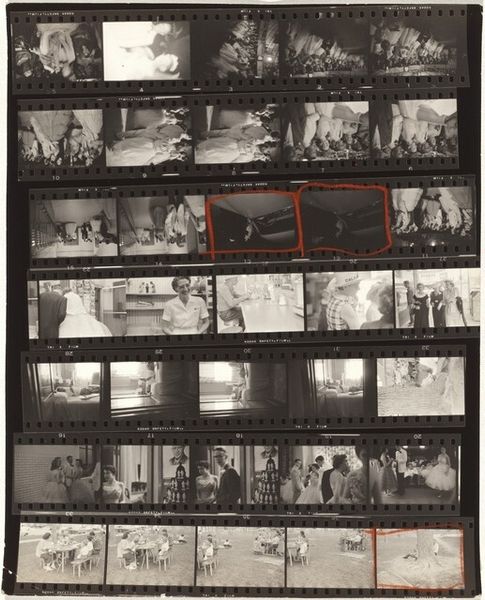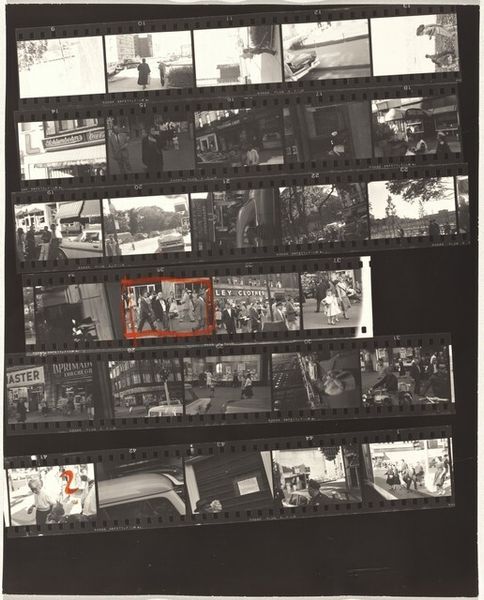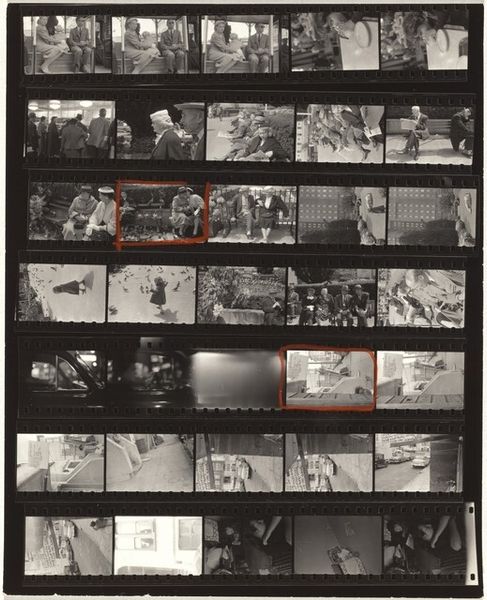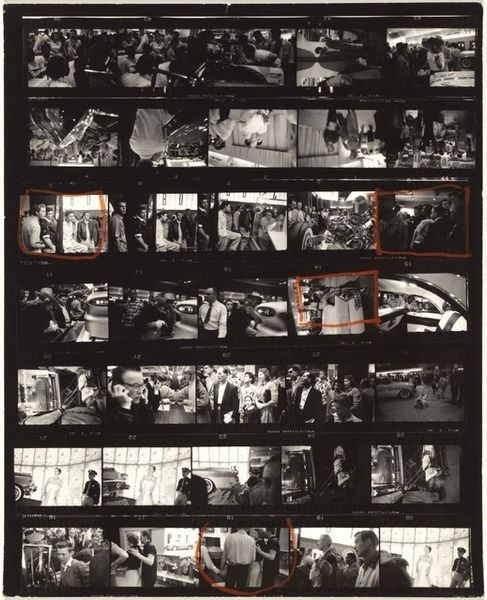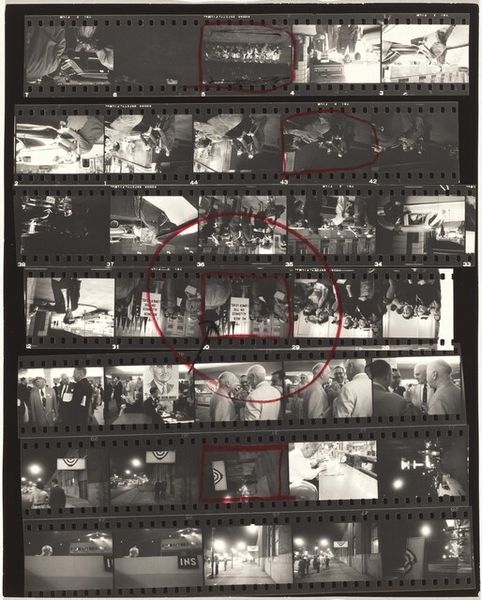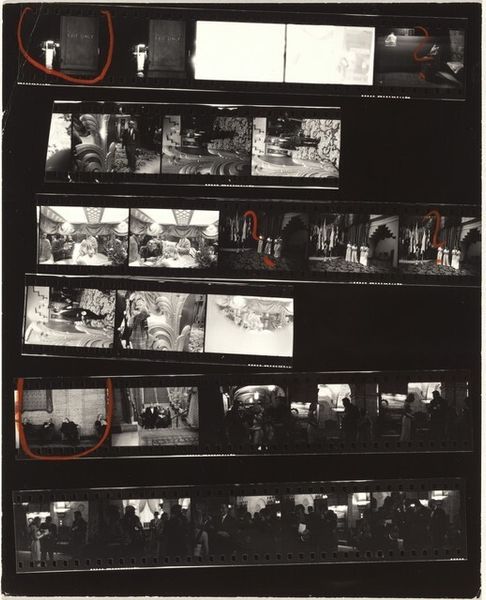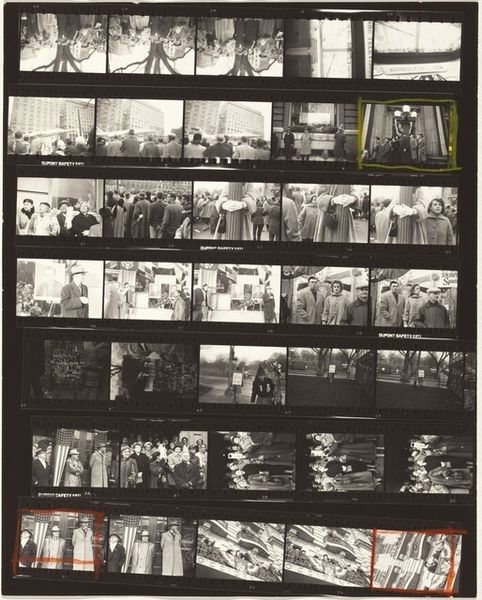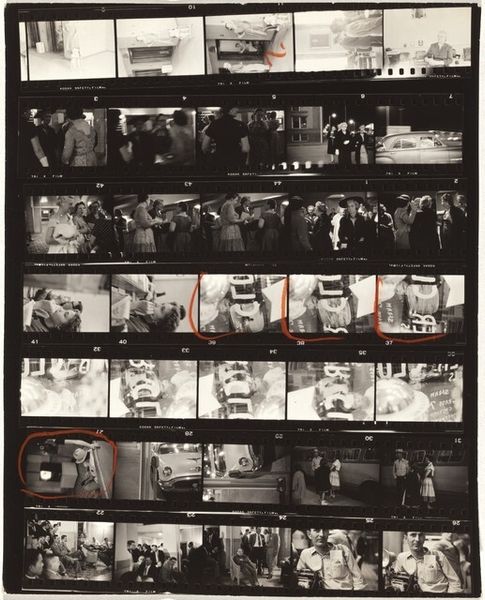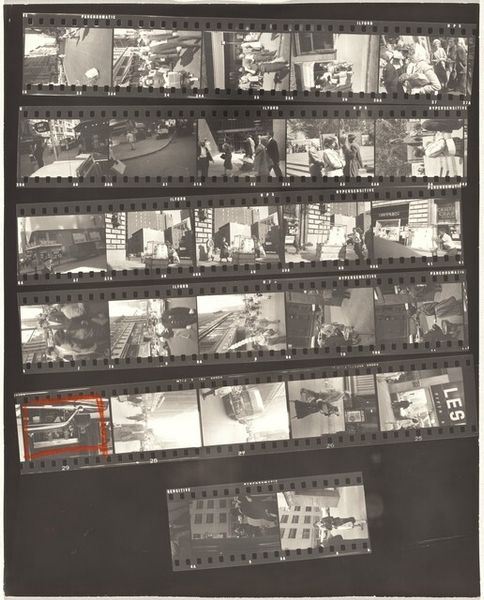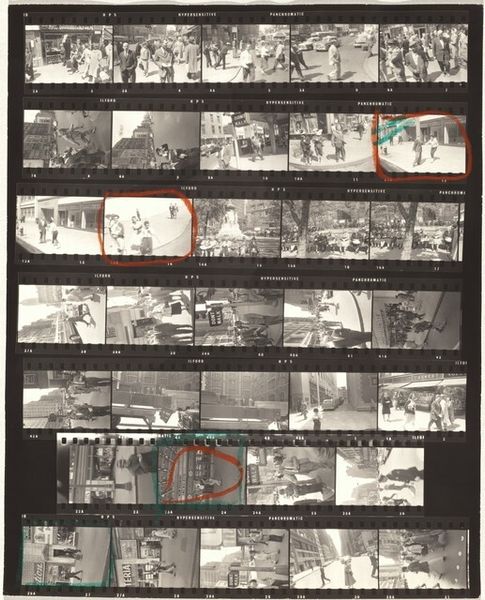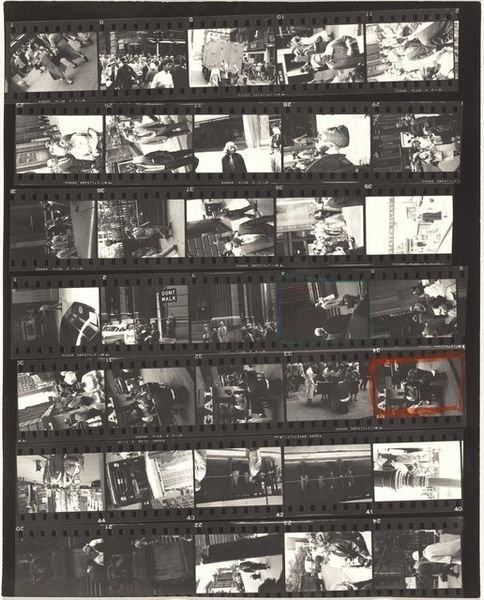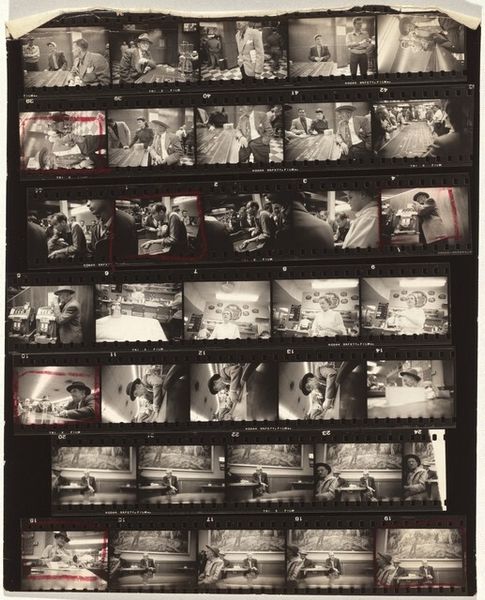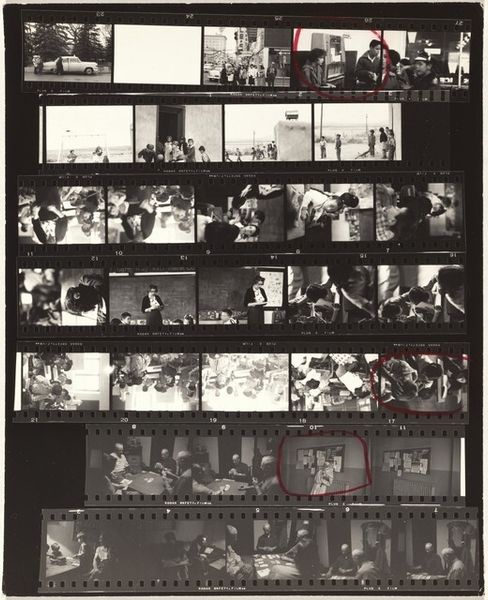
photography, gelatin-silver-print
#
portrait
#
film photography
#
archive photography
#
street-photography
#
photography
#
culture event photography
#
gelatin-silver-print
#
cityscape
#
modernism
Dimensions: overall: 25.2 x 20.2 cm (9 15/16 x 7 15/16 in.)
Copyright: National Gallery of Art: CC0 1.0
Curator: Here we have Robert Frank’s “Guggenheim 754—Jay, New York,” a gelatin silver print from 1956. Editor: It strikes me as a fragmented diary, a series of glances caught in black and white. There’s something both intimate and distanced about it, like sifting through old memories. Curator: Frank captured this strip of negatives on 35mm film—it's like peeking into the photographer’s darkroom process, seeing not the final curated image, but the raw, unedited journey of image-making. Note the frame with red marks on it: this way we have a visual index for printing in the dark room. Editor: Exactly. Look at the sheer banality of it— construction workers, bustling streets, flags hanging heavy. What was his production context for the 'The Americans'? It speaks of America and of the role of art within its shifting economy, like the streetscapes in Walker Evans photographs for the FSA program of the '30s. Curator: His methods defied convention. This grainy, unfiltered approach— wasn’t about aesthetics alone but also a very palpable desire to record a specific period in a subjective, almost voyeuristic manner. This series presents us with a glimpse into urban landscapes and its citizens during a time of social transformation and great division, as America went into the Cold War Era and experienced unprecedented industrial growth. Editor: Frank's approach disrupts the smooth, consumable image, showing the joins, the material reality of the work. What can you say more about that? Curator: He's inviting us into the alchemy, but also suggesting that the "perfect" shot might be a myth—a romantic and powerful illusion. There is nothing contrived. Just life flowing. You can really feel Frank experimenting here to translate emotional honesty to the world, questioning conventional artistic standards. I can hear his heartbeat in these silver crystals... Editor: Well, in the end, by showcasing both process and subject matter so bluntly, Frank underscores how labor shapes perception, memory, and yes, art itself. Curator: It becomes a reflection, not just of mid-century America, but of photography itself as a craft— vulnerable, immediate, human.
Comments
No comments
Be the first to comment and join the conversation on the ultimate creative platform.
